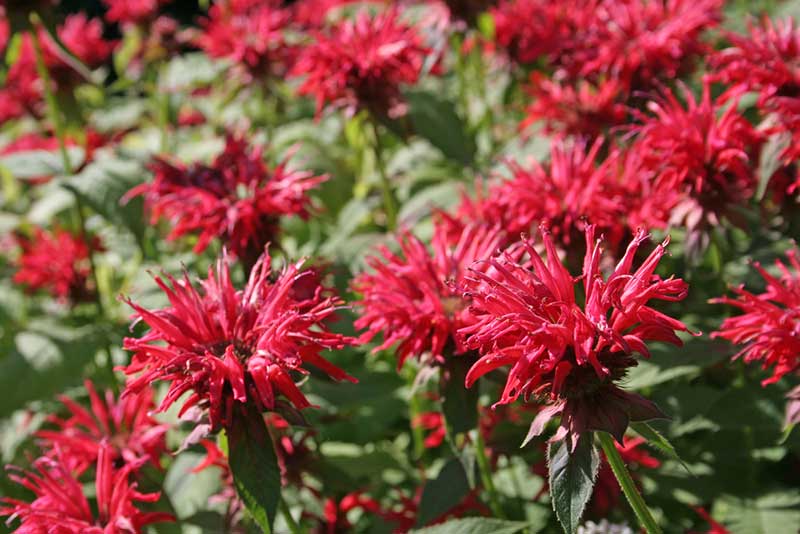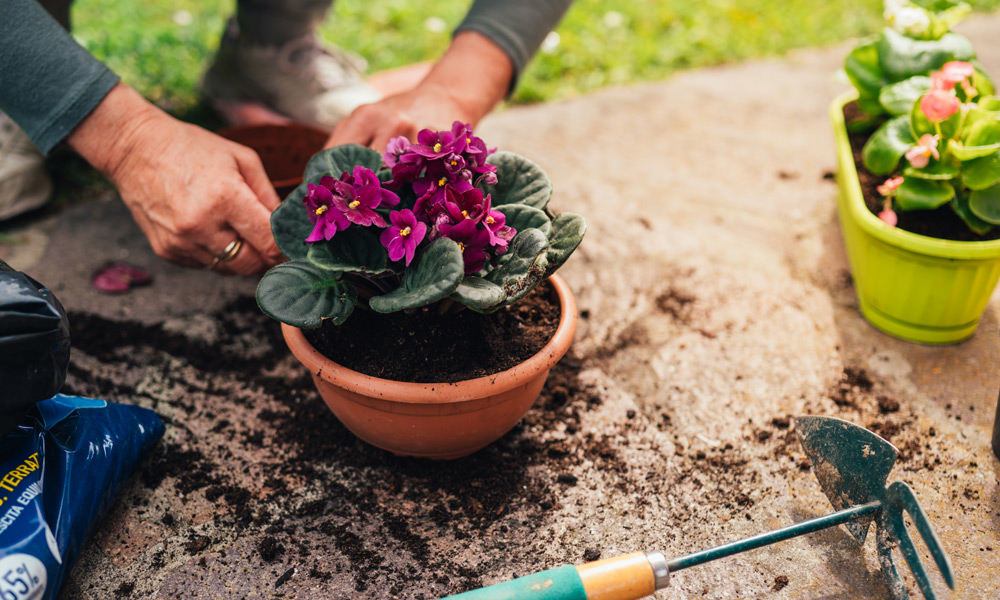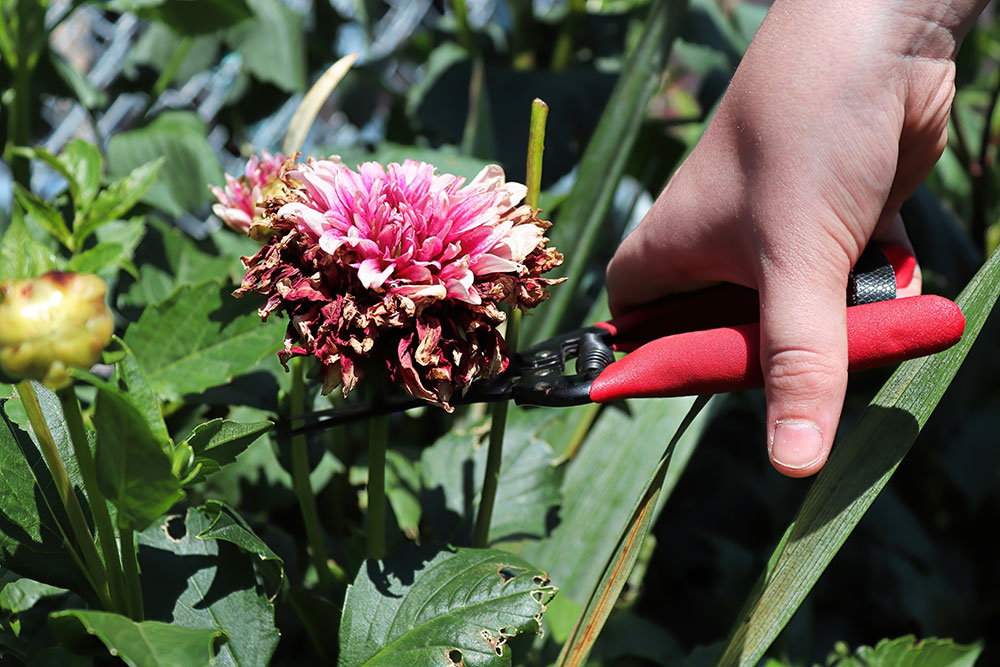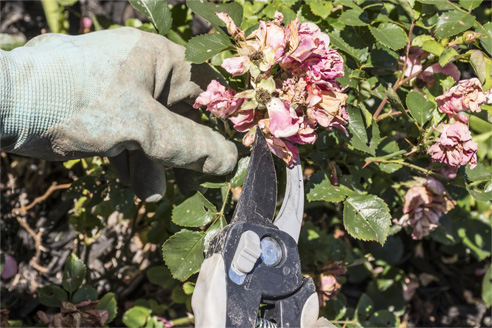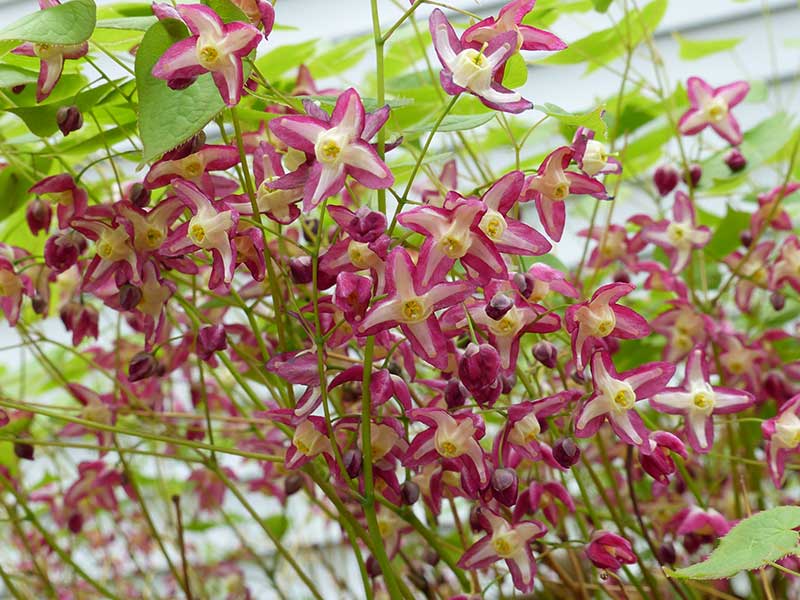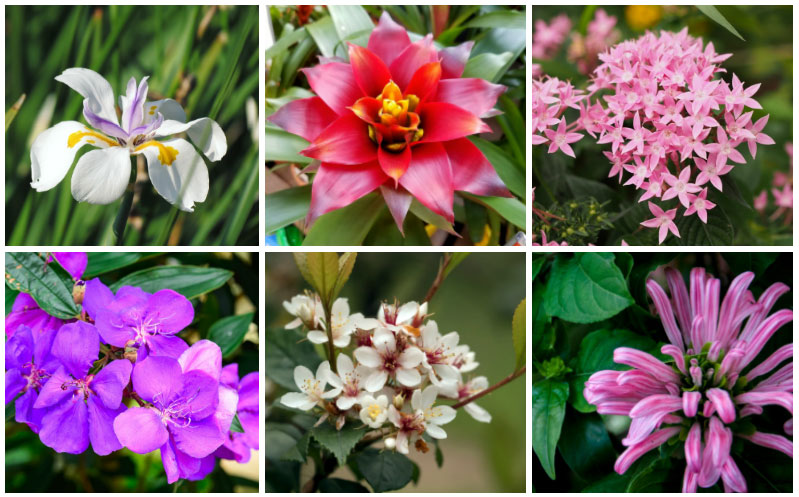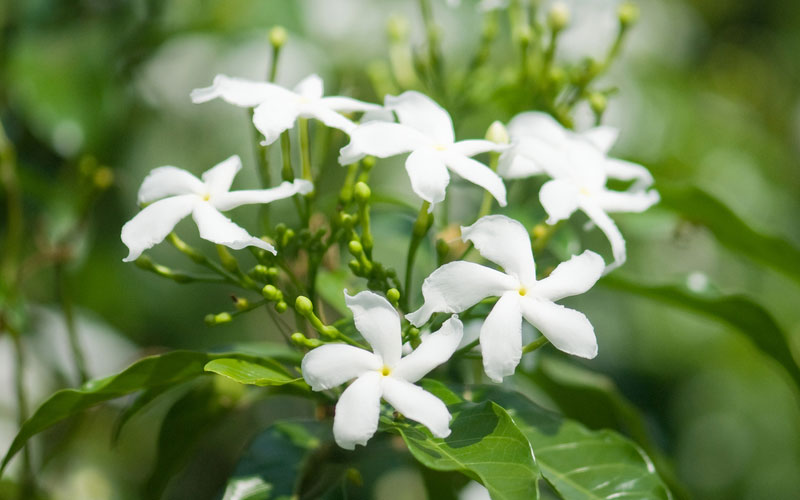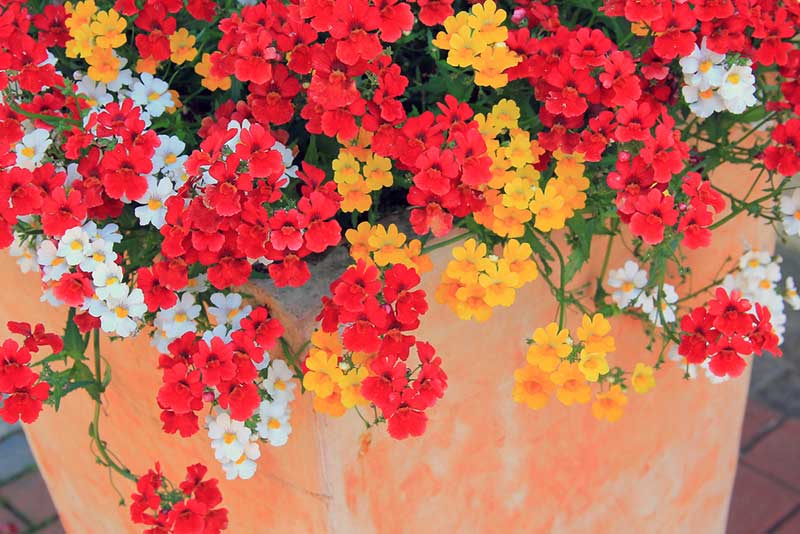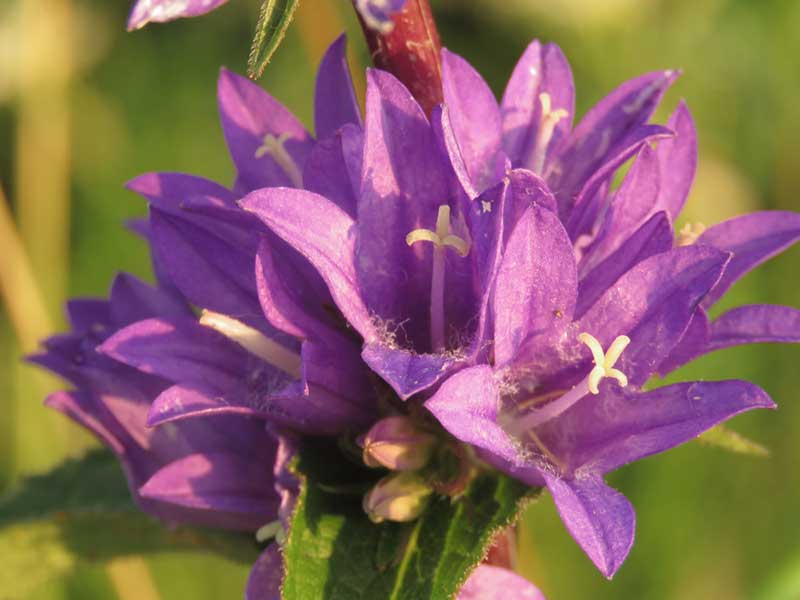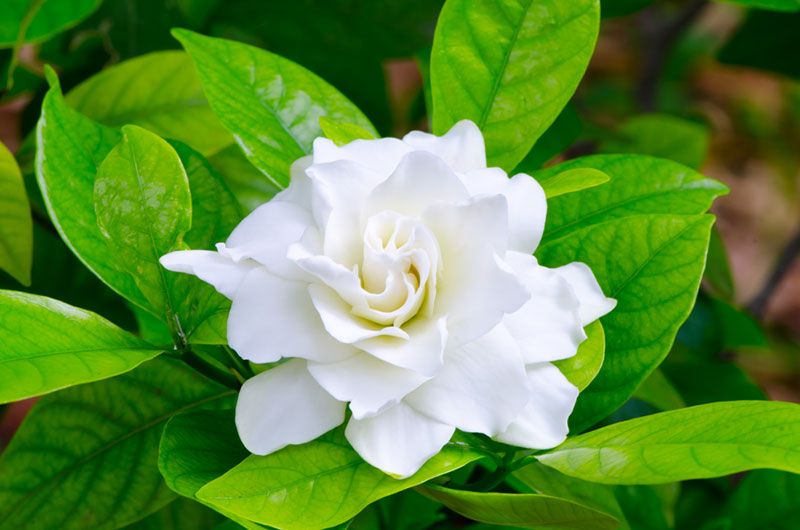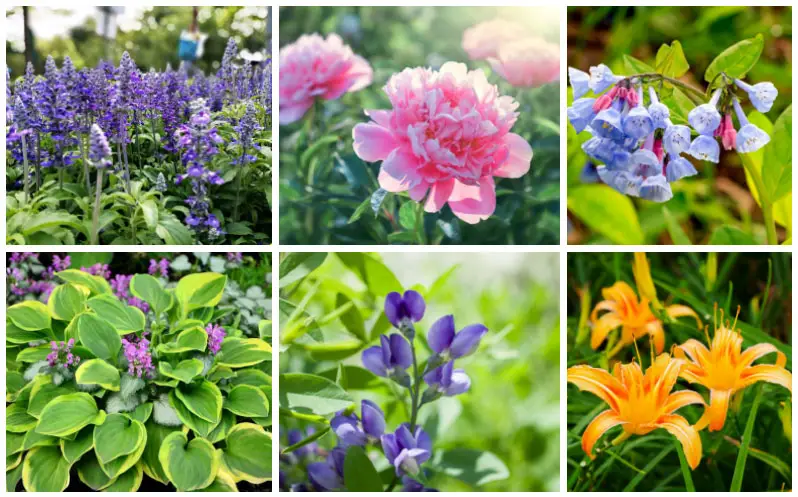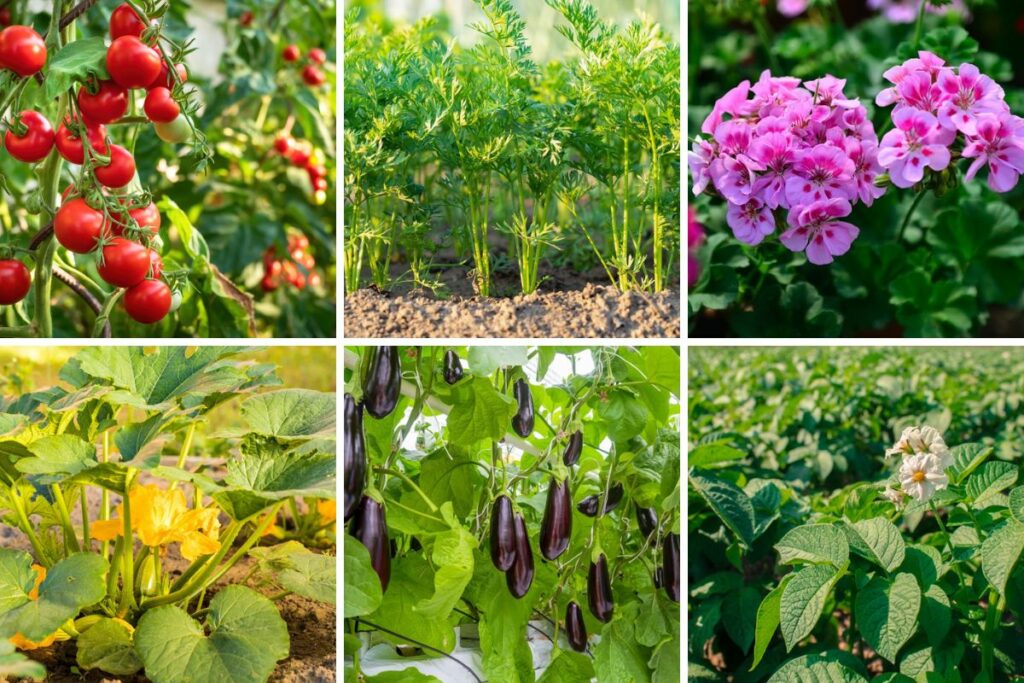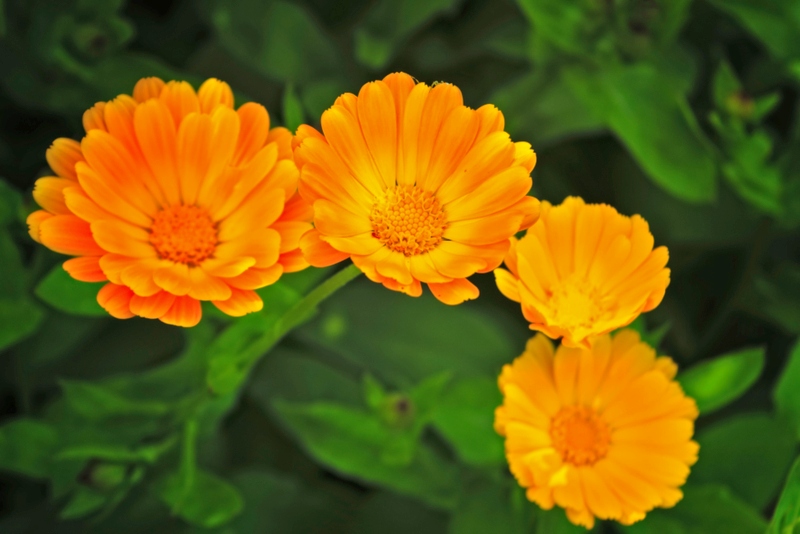
Gardening can sometimes feel overwhelming with all the planning and planting, but what if I told you there are plants that do the work for you?
Some plants have this amazing ability to self-seed, making your garden flourish year after year with minimal effort.
I’ve put together a list of 27 such plants that will add beauty and variety to your garden.
These plants can take root on their own, ensuring a vibrant and ever-changing landscape without constant replanting.
1. Calendula

Calendula, also known as pot marigold, is one of my favorite self-seeding plants. Its bright, cheerful flowers can light up any garden.
I love how easy it is to grow. Just let it go to seed, and voila, new plants pop up the next season!
Plus, it’s not only beautiful but also beneficial for pollinators.
2. Forget-Me-Nots
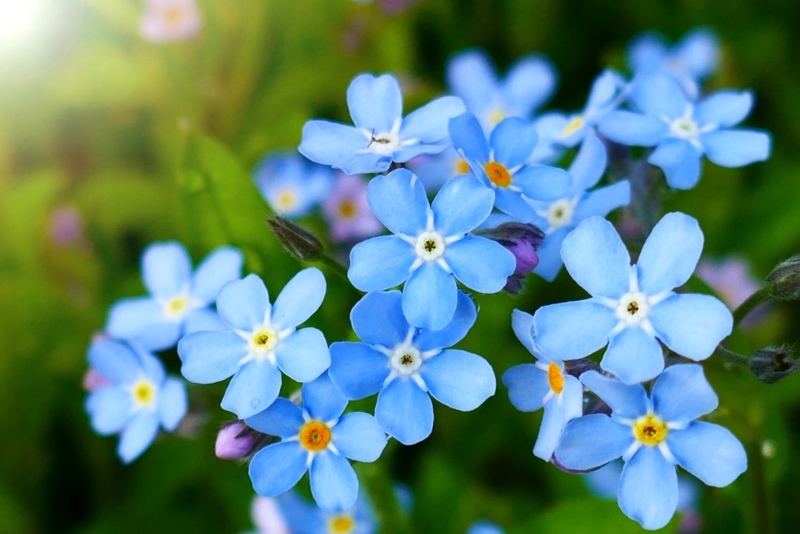
Forget-Me-Nots are charming little flowers that add a touch of whimsy to any garden. I love how they create a beautiful carpet of blue during spring and early summer.
These plants are quite good at self-seeding, making them a low-maintenance option. I find it delightful how they often surprise me by popping up in unexpected places.
Growing them in a semi-shaded area with moist soil will yield the best results.
3. Poppies
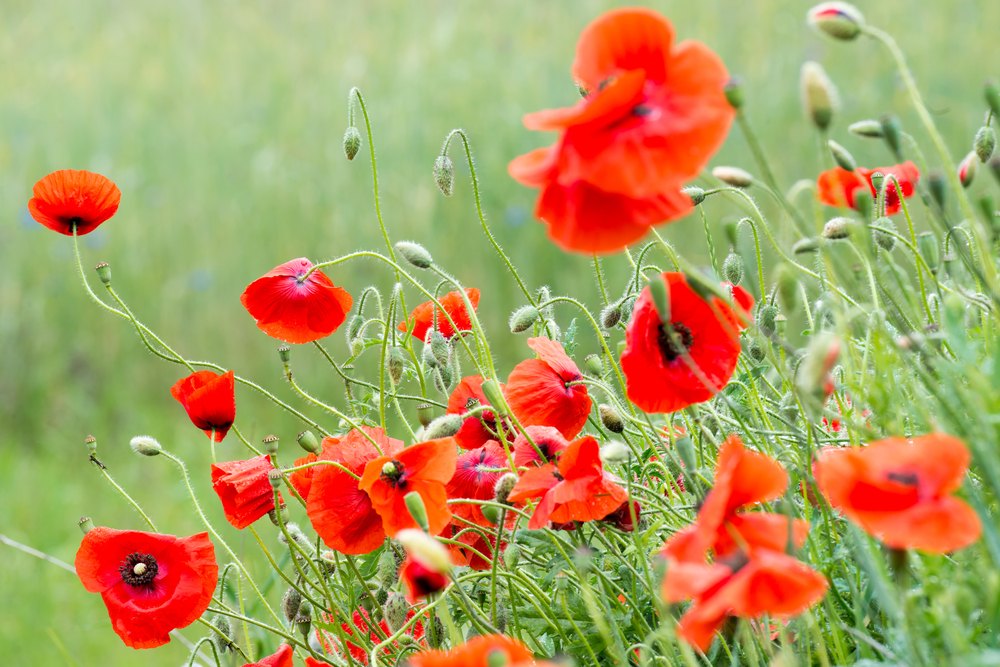
Poppies are one of my favorite self-seeding plants. They bring a burst of color to any garden with their vibrant flowers.
Just scatter a few seeds and let them do their magic. By the next growing season, you’ll have a delightful patch of poppies without any extra effort.
These plants prefer sunny spots and well-drained soil. They are hardy and can tolerate different weather conditions, making them easy to grow.
4. Black-eyed Susan
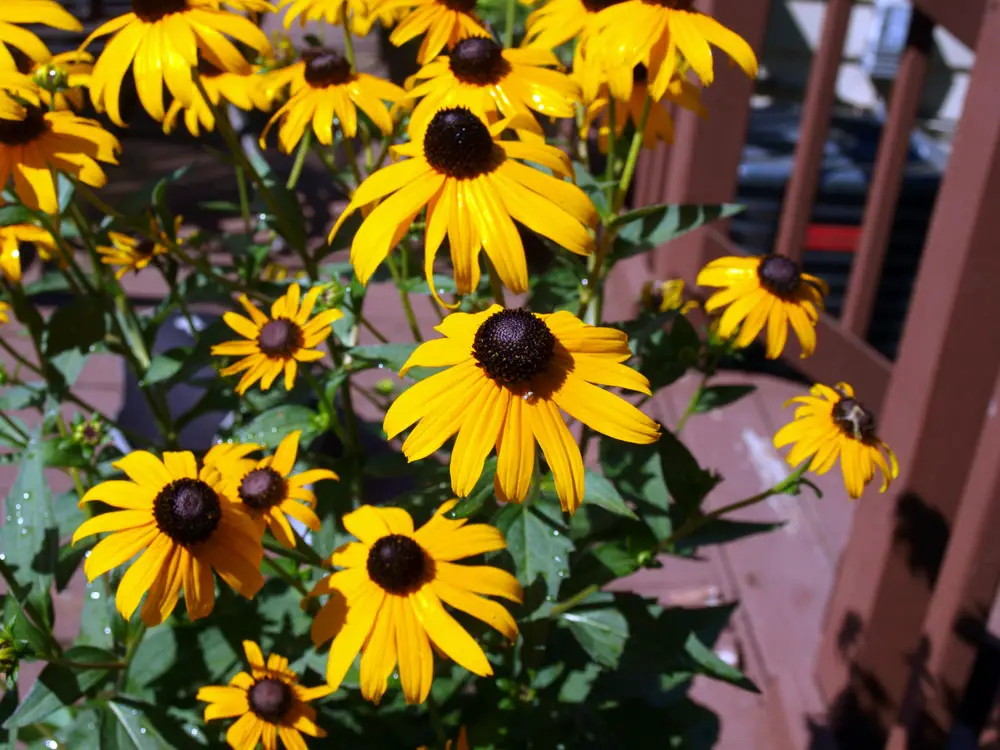
I love Black-eyed Susans for their bright yellow petals and dark centers.
They’re hardy and can thrive in various climates.
It’s exciting to see them popping up year after year with minimal effort on my part.
They attract pollinators like bees and butterflies.
5. Columbine
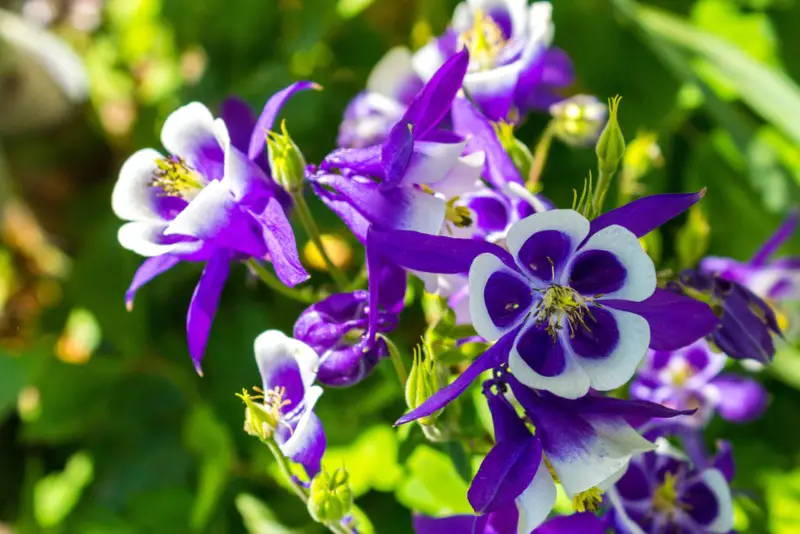
Columbine is one of my favorite self-seeding plants. Its delicate, intricate flowers bring a touch of elegance to the garden.
This plant thrives in partial shade and adapts to various soil types. Once established, it reseeds easily, gracing my garden with new blooms each year.
I’ve found that columbine attracts hummingbirds and adds a whimsical charm with its unique, spurred flowers.
6. Cleome
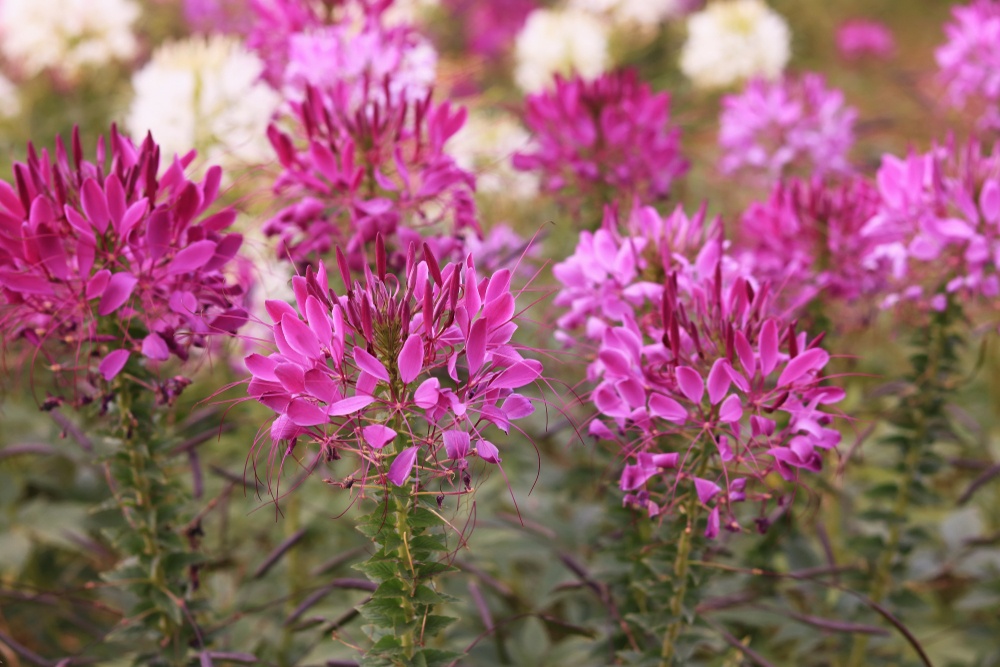
Cleome is a favorite in my garden. These tall, fragrant flowers, also known as spider flowers, bring a touch of elegance.
They create lovely layers with their unique shape and come in shades of pink, white, and purple. Once I plant them, they self-seed easily, ensuring a new crop every year.
Give Cleome plenty of sunshine and well-drained soil. They’re as low-maintenance as they are beautiful.
7. Four O’Clocks
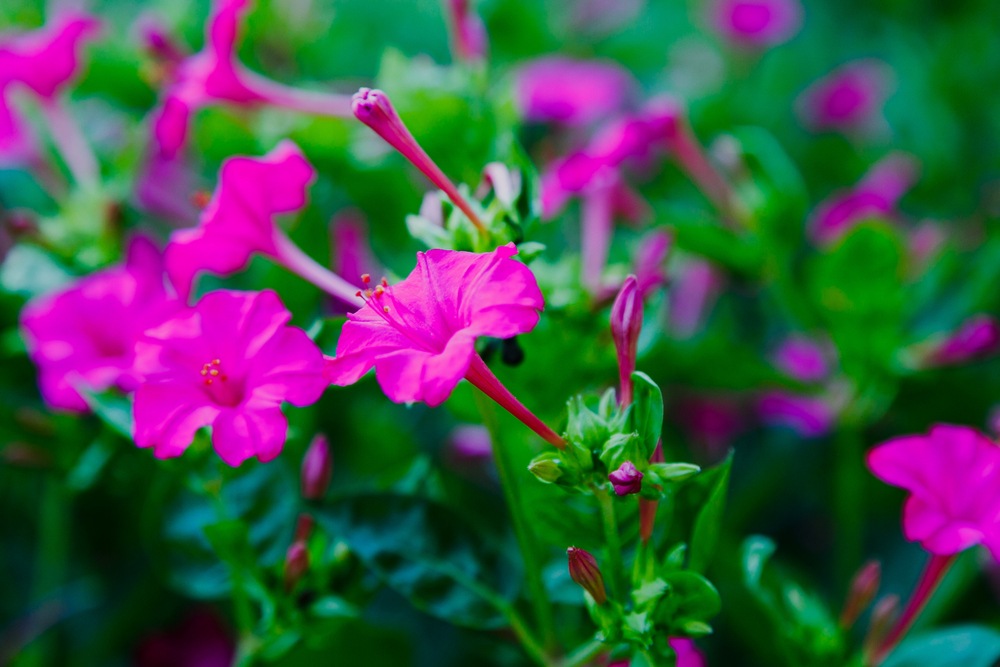
Four O’Clocks are one of my favorite self-seeding plants. They bloom in the late afternoon, adding a splash of color to the garden when many other flowers have already closed up for the night.
I love how they come in a variety of colors including pink, red, yellow, and white. They also have a lovely fragrance that attracts pollinators like bees and butterflies.
8. Snapdragons
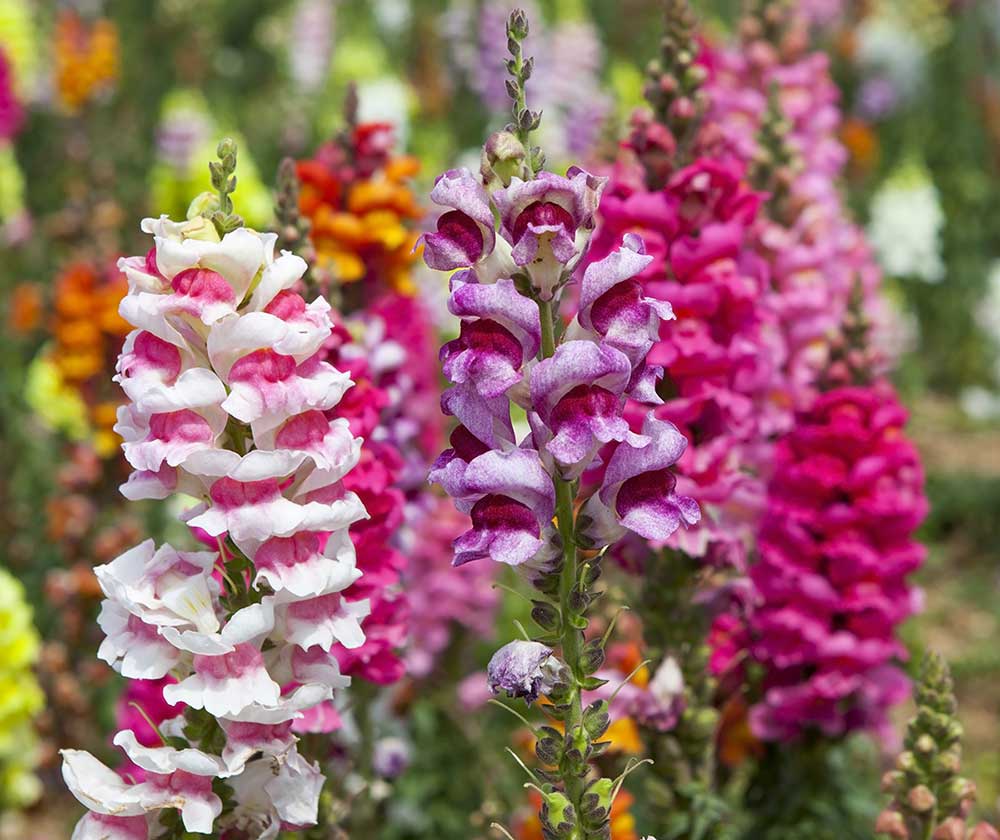
I love snapdragons for their vibrant colors and unique flower shapes. These beauties can easily self-seed in your garden. They often pop up in the most unexpected places, adding a touch of surprise and delight. I find that they thrive in sunny spots with well-drained soil.
Letting snapdragons self-seed can create a charming, ever-changing floral display year after year.
For growing tips, see our Snapdragons Complete Growing Guide Here
9. Sweet Alyssum
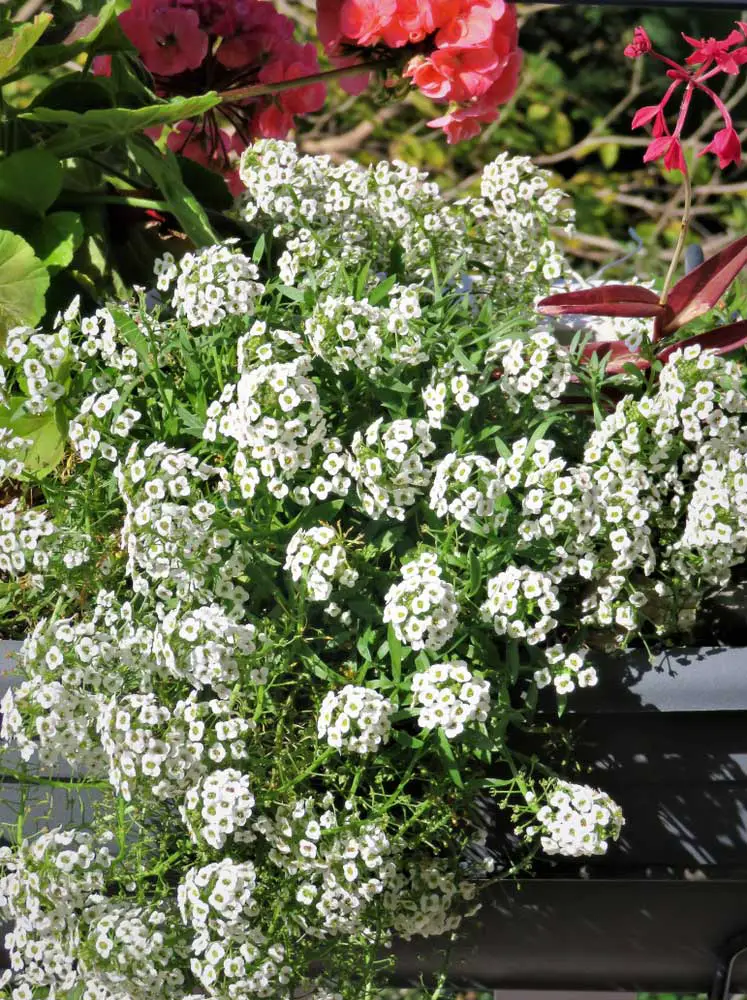
Sweet Alyssum is one of my favorite self-seeding plants. Its tiny, fragrant flowers come in white, pink, and purple hues, adding a lovely touch to any garden.
I love how it attracts pollinators like bees and butterflies. It’s a tough little plant that thrives even in poor soil and requires minimal care.
10. Larkspur
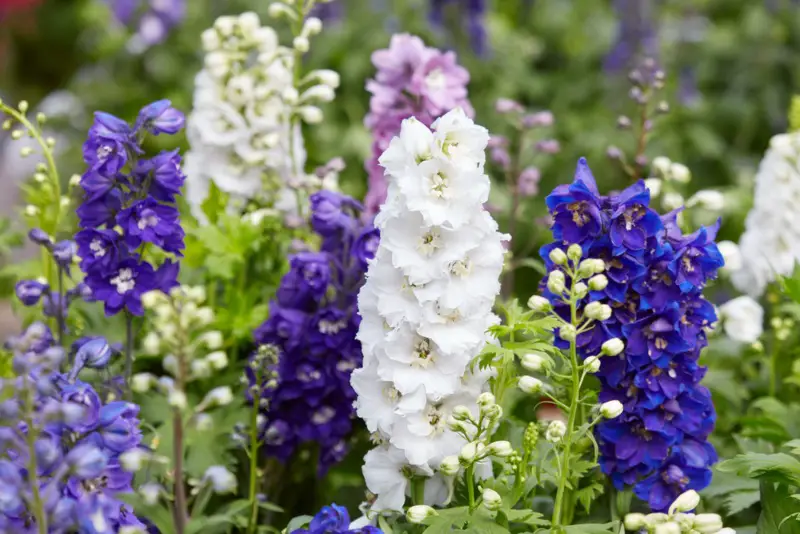
I love having Larkspur in my garden. These tall, graceful flowers add a splash of color with their beautiful blue, pink, and white blooms.
They easily self-seed, so I don’t have to worry about replanting them every year. Just make sure to plant them in a sunny spot, and they’ll do the rest!
11. Nigella
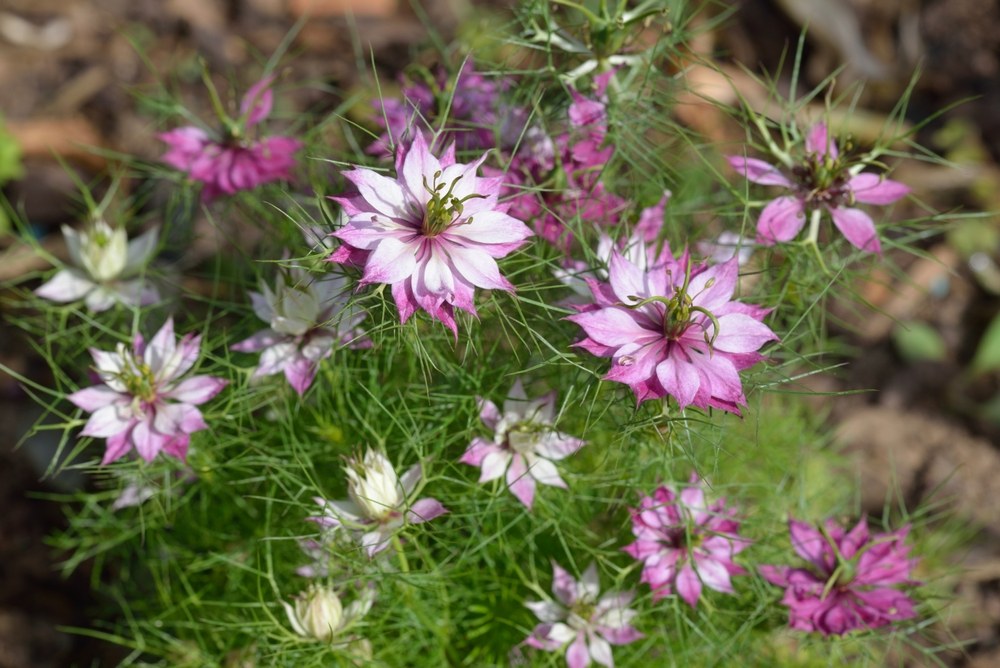
I love Nigella, also known as love-in-a-mist. It’s an easy-growing annual that adds charm to any garden.
With its feathery foliage and unique seed pods, Nigella can self-seed effortlessly. The blue, white, or pink flowers are a delightful sight.
Come spring, you’ll be surprised at the new patches of Nigella popping up where you least expected!
12. Hollyhocks
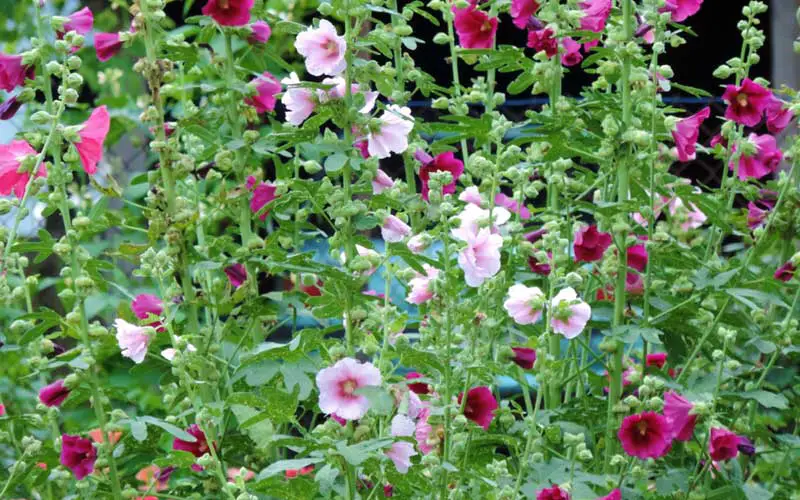
Hollyhocks are a delightful addition to any garden. They grow tall and produce beautiful, colorful blooms.
I find they thrive in sunny spots with well-drained soil.
Once they flower, they self-seed generously, ensuring a new crop each year.
13. Cosmos
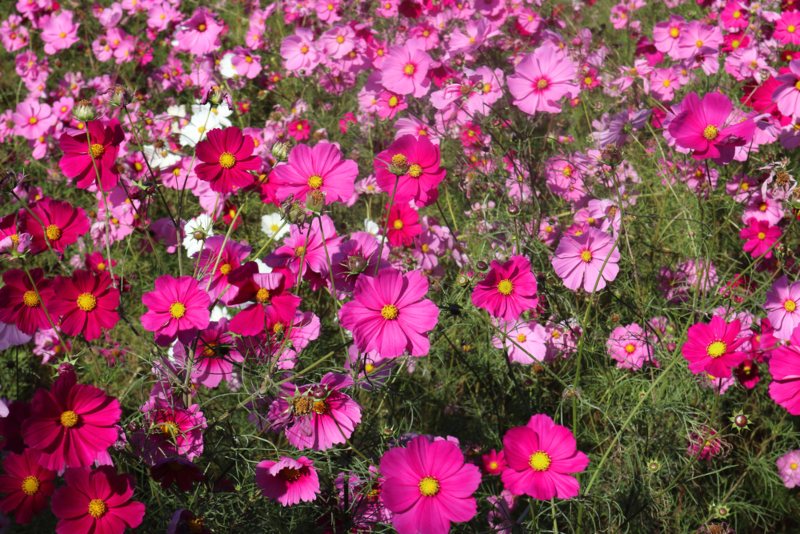
I just love Cosmos for their cheerful and daisy-like flowers. They provide a burst of color from summer through fall.
These plants are incredibly hardy and thrive in poor, dry soils. One of the best things about Cosmos is that they will generously self-seed, popping up in your garden year after year with minimal effort.
Just let a few flowers go to seed and watch as new plants emerge next season.
Read More: Keep Cosmos Blooming Strong All Summer!
14. Love-in-a-Mist
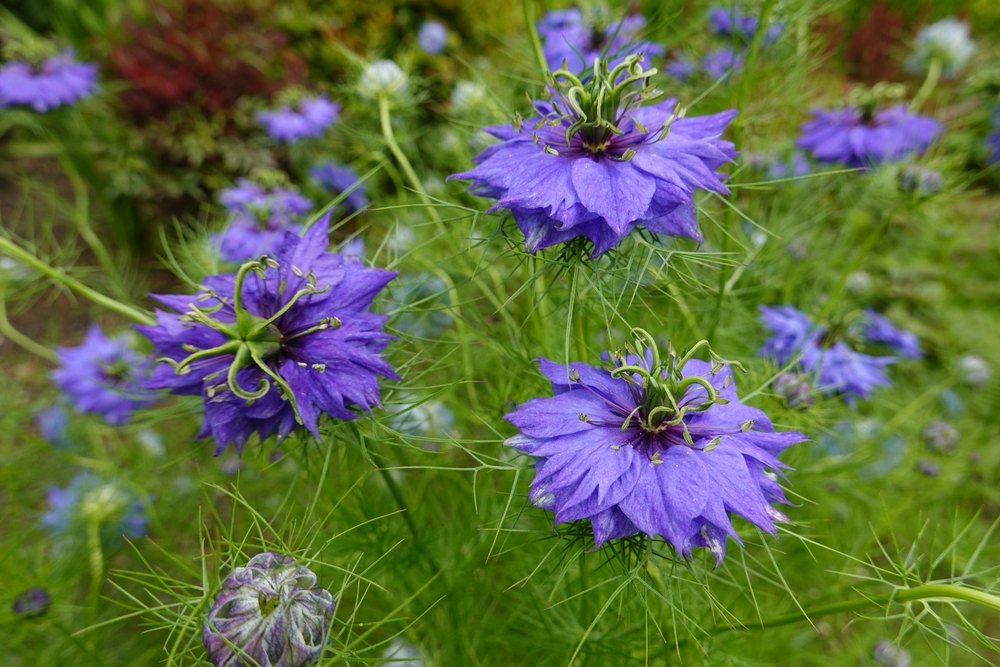
Love-in-a-Mist, also known as Nigella damascena, is a delightful annual plant.
Its delicate, feathery foliage and starry blue flowers bring a unique charm to any garden.
I love how easily it self-seeds, ensuring a colorful display year after year without much effort from me.
15. Perennial Sunflower
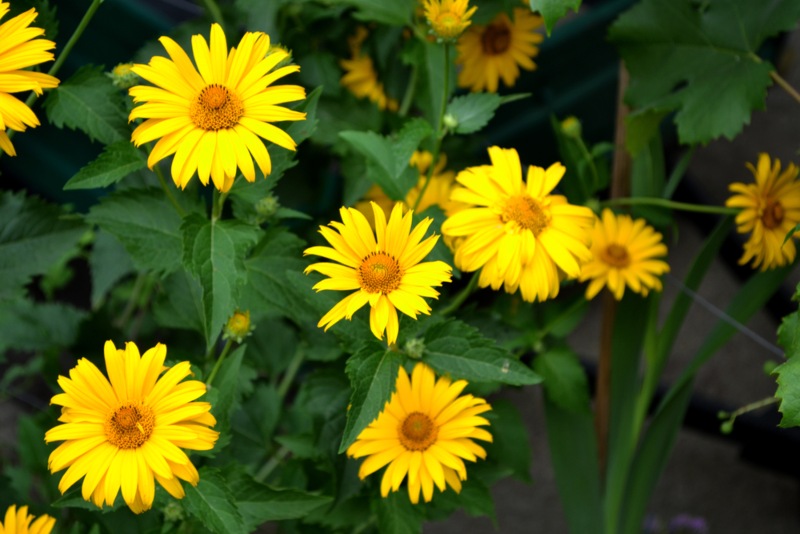
I love seeing the bright, cheerful blooms of perennial sunflowers in my garden. They not only bring a splash of color but also attract pollinators like bees and butterflies.
These hardy plants self-seed effortlessly. Once planted, they come back year after year, making garden maintenance a breeze.
16. Laceflower (Ammi majus)
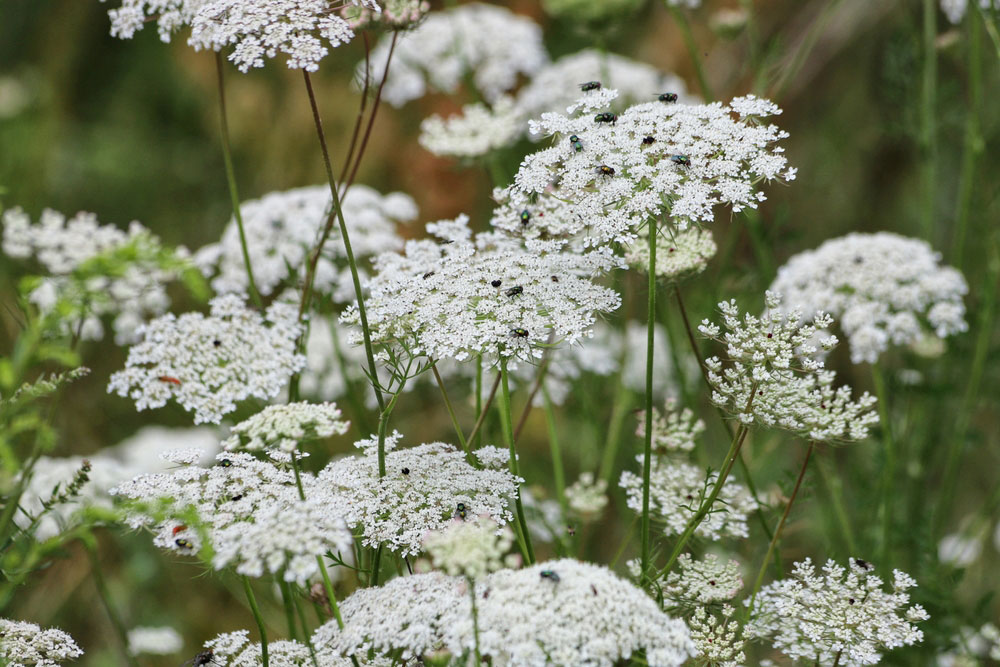
Laceflower, also known as Ammi majus, is a charming self-seeder that adds a delicate touch to your garden. Its lacy white blooms resemble Queen Anne’s Lace, creating an airy, ethereal look.
To grow laceflower, plant seeds directly in your garden after the last frost. Lightly press them into the soil without covering, as light helps with germination. Space plants 6-9 inches apart for best results.
These beauties attract beneficial insects to your garden, making them a great addition to pollinator-friendly spaces. Laceflower is low-maintenance and drought-tolerant, perfect for busy gardeners or those in drier climates.
17. Feverfew
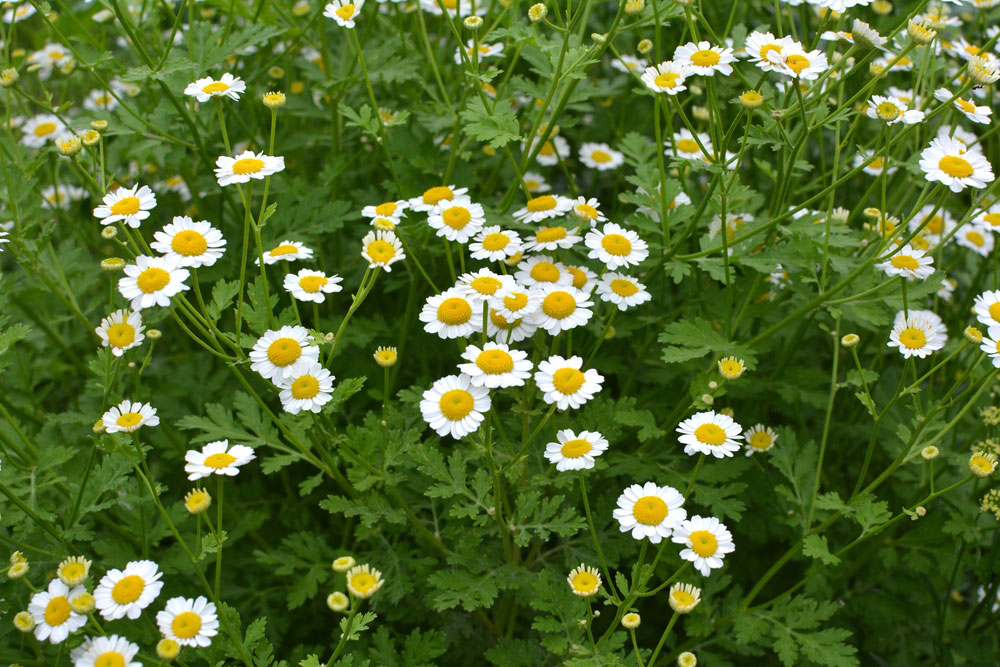
Feverfew (Tanacetum parthenium) is a charming herb that will fill your garden with daisy-like flowers. This plant is a champion self-seeder, ensuring your garden stays vibrant year after year.
To grow feverfew, simply scatter seeds on top of moist soil in spring or fall. The seeds need light to germinate, so don’t cover them. Water gently and watch for seedlings in 10-15 days.
Feverfew thrives in full sun to partial shade. It’s low-maintenance and adapts well to various soil types. You can keep it in check by deadheading before seeds form, or let it spread naturally for a carefree garden look.
18. Corn Marigold (Glebionis segetum)
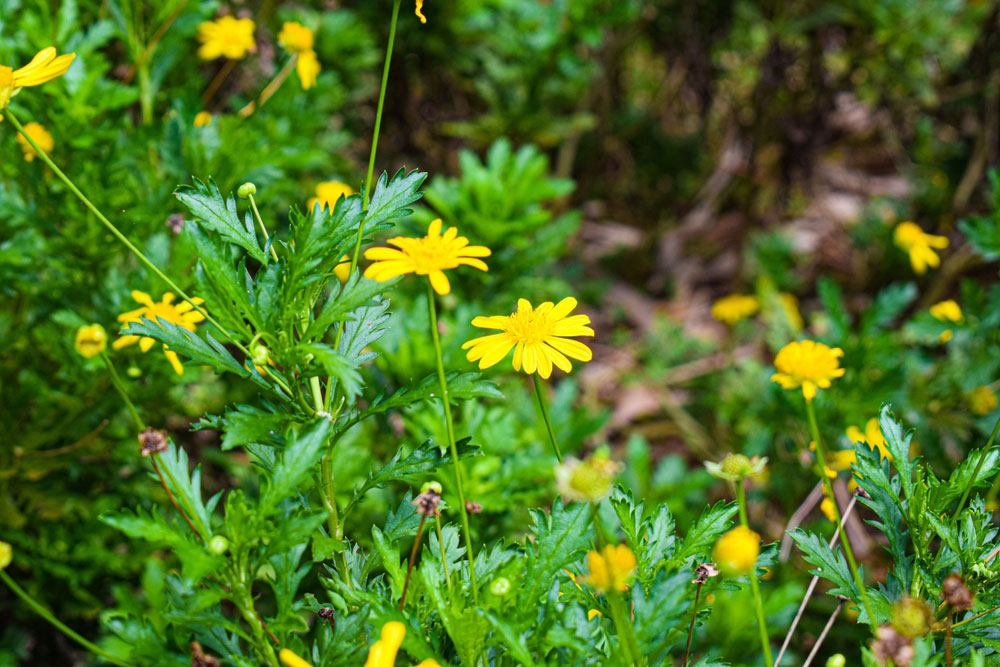
Corn Marigold is a bright and cheery wildflower that will bring a splash of sunny yellow to your garden. This annual plant grows 12-18 inches tall and produces large, daisy-like blooms that are 2-3 inches across.
You’ll love how easy Corn Marigold is to grow. It thrives in poor soils and doesn’t need much care. To get started, simply scatter seeds in a sunny spot in your garden in spring or early summer.
Once established, Corn Marigold will happily self-seed year after year. Its seeds can lay dormant in the soil, popping up when conditions are right. This makes it a great choice for wildflower meadows or naturalized areas.
19. Honesty (Lunaria annua)
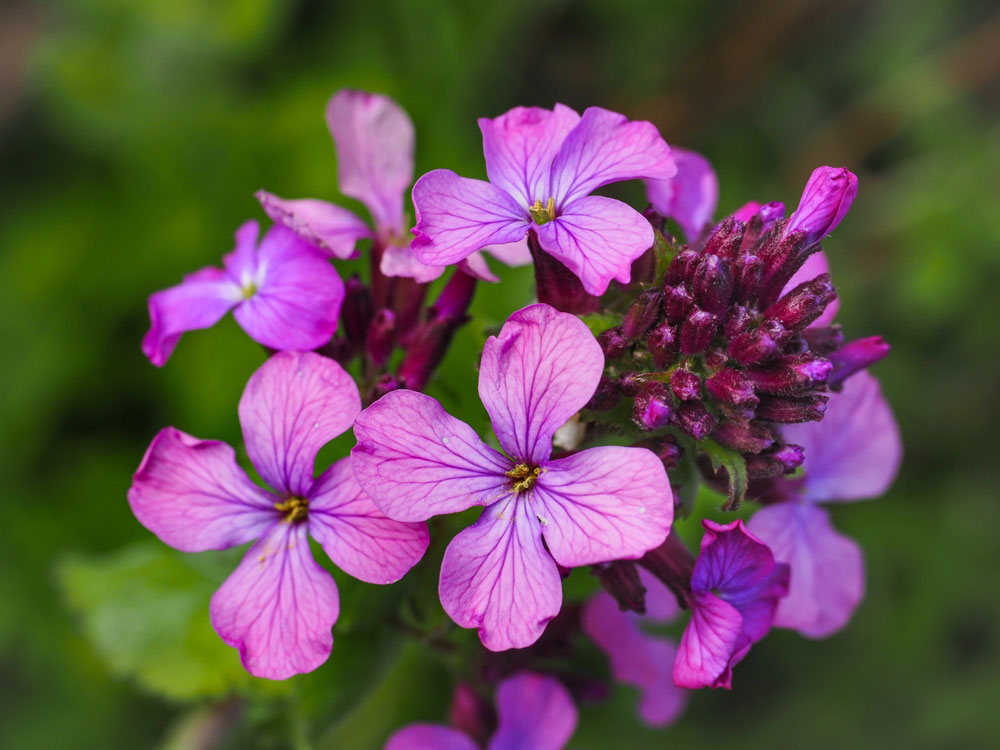
Honesty, also known as the money plant, is a charming biennial that will happily self-seed in your garden. Its striking purple flowers bloom in spring, followed by unique, silver-dollar-shaped seed pods.
To grow honesty, scatter seeds thinly over prepared soil in spring or fall. Lightly cover them with soil and keep the area moist. You don’t need to thin the seedlings, as they’ll naturally spread out.
These plants are low-maintenance and attract pollinators to your garden. The seed pods make great dried flower arrangements, adding a touch of whimsy to your home decor.
20. Yellow Corydalis (Pseudofumaria lutea)
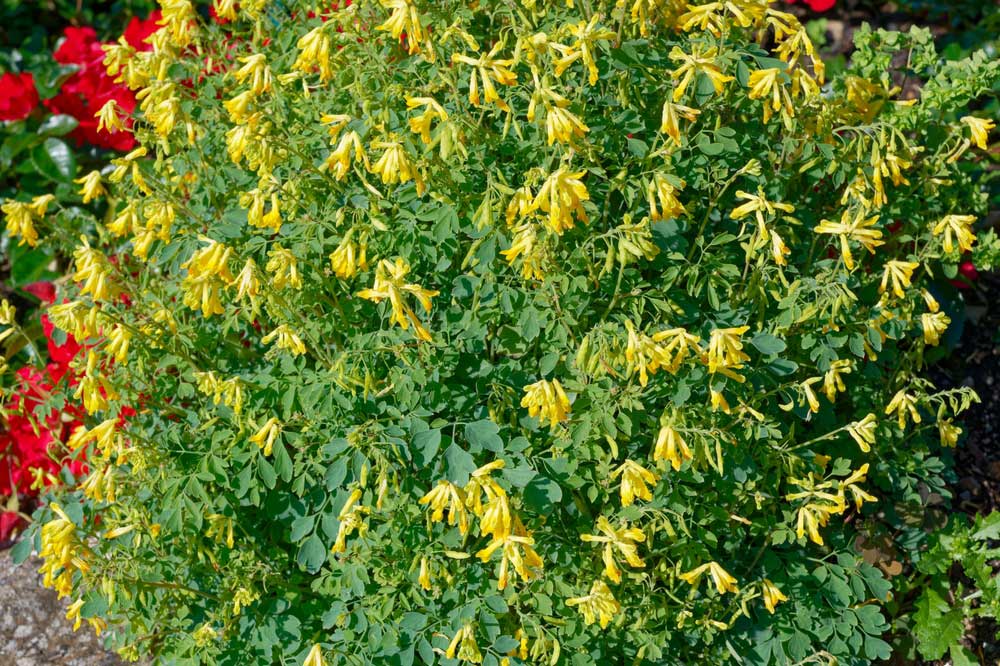
Yellow Corydalis is a charming self-seeder that thrives in shady spots. You’ll love its delicate yellow flowers and lacy blue-green leaves. This plant forms neat mounds about 12-18 inches tall.
To grow Yellow Corydalis, choose a partially shaded area with well-draining soil. It’s perfect for rock gardens or underplanting shrubs and trees. Once established, it needs little care and will spread on its own.
Yellow Corydalis is great for filling gaps in your garden. It often pops up in cracks and crevices, adding a touch of whimsy. You’ll enjoy its long blooming period from spring through fall.
21. Toadflax (Linaria vulgaris)
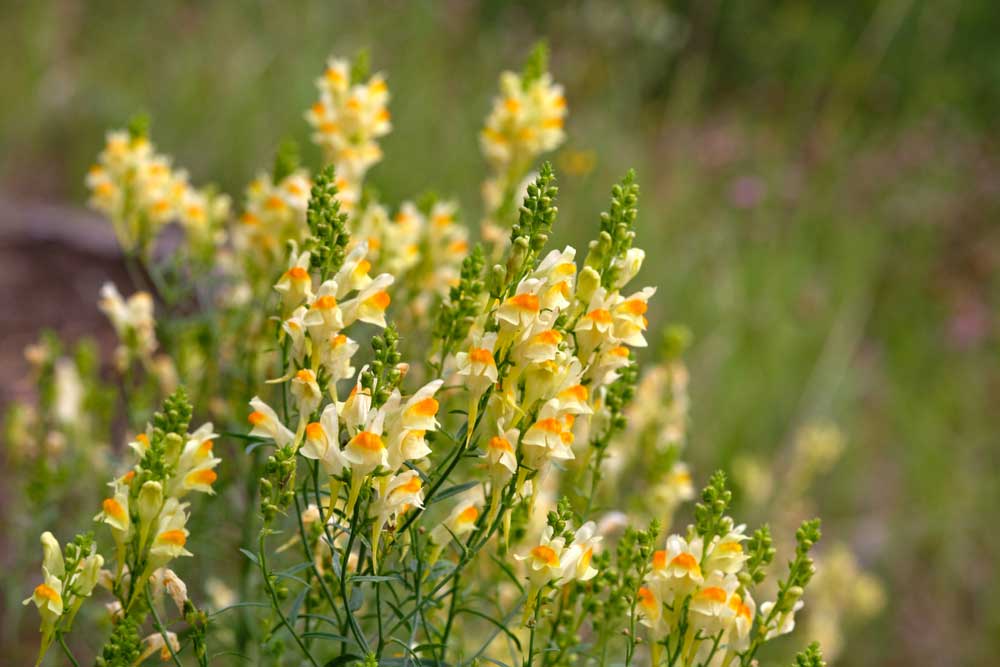
Toadflax, or Linaria vulgaris, is a charming plant that looks like mini snapdragons. Its bright yellow flowers add a cheerful touch to your garden. This easy-to-grow plant spreads quickly on its own, making it perfect for low-maintenance areas.
To grow toadflax, sow seeds directly in your garden in early spring. Choose a sunny spot with well-draining soil. These tough plants can handle drought and poor soil conditions. They’ll bloom from late spring through summer, attracting bees and butterflies to your yard.
Be careful, though! Toadflax can spread rapidly. Keep an eye on it to prevent it from taking over your garden. You can control its spread by removing unwanted seedlings or deadheading flowers before they set seed.
22. Spiderwort
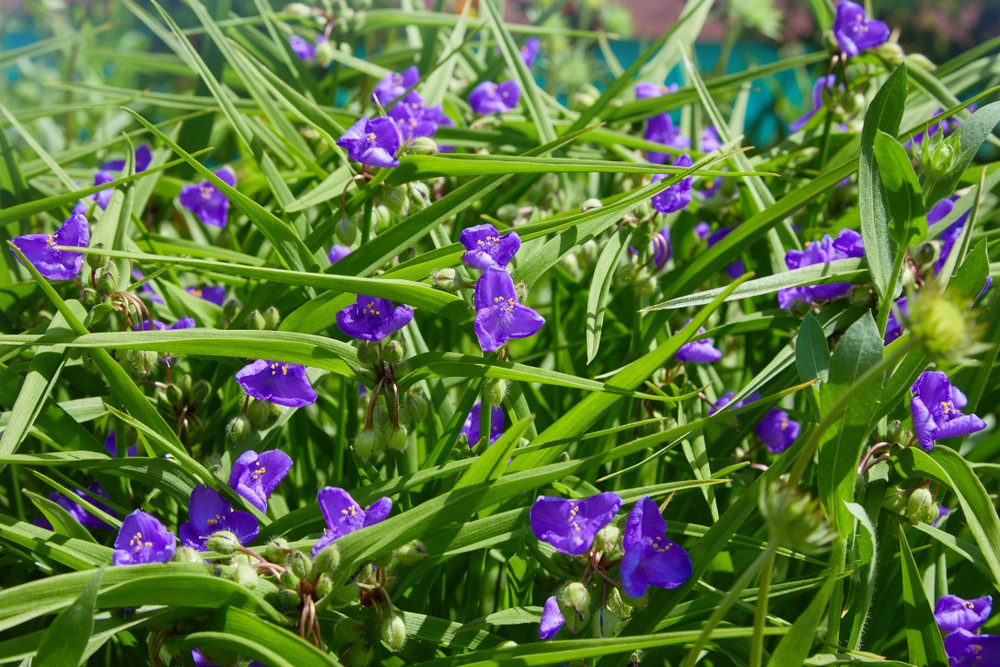
Spiderwort (Tradescantia virginiana) is a hardy perennial that spreads easily through self-seeding. Its grass-like foliage and vibrant purple flowers add a unique touch to your garden.
Plant spiderwort in moist, well-draining soil for best results. You can easily propagate it by dividing existing plants in spring or fall.
This low-maintenance plant thrives in partial shade to full sun. It’s a great choice for filling gaps in your garden beds or borders. Spiderwort attracts pollinators like bees and butterflies, making it a valuable addition to wildlife-friendly gardens.
To keep your spiderwort looking tidy, trim back spent flowers and foliage after the blooming period. This will encourage a second round of blooms and prevent excessive self-seeding if desired.
23. Annual Phlox (Phlox drummondii)
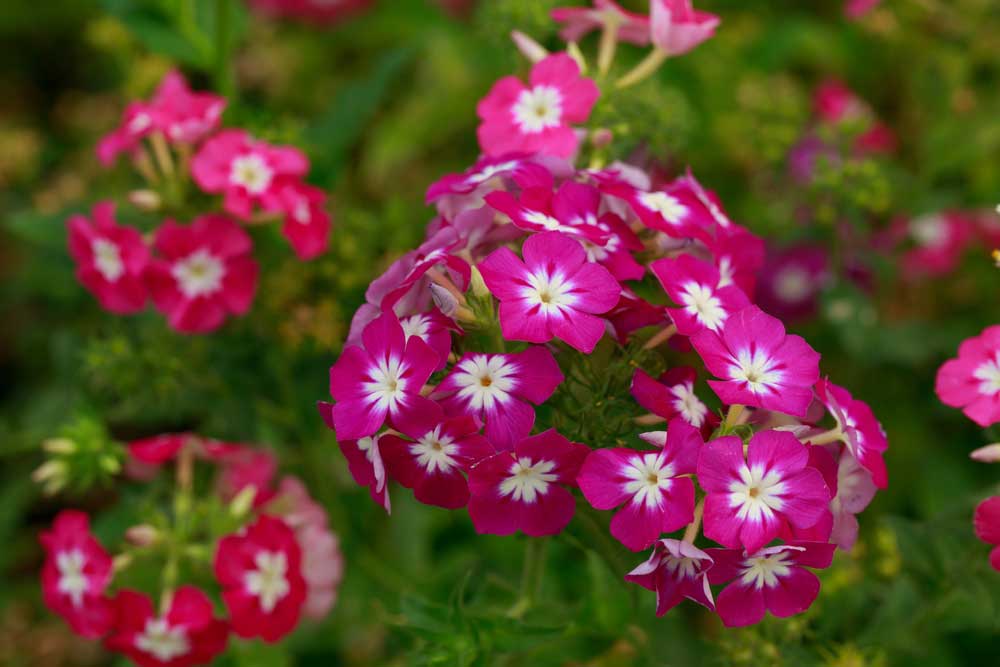
Annual Phlox brings cheerful color to your garden and spreads easily by self-seeding. This low-growing flower comes in vibrant shades of rose-red, pink, and white. You’ll love how it creates a carpet of blooms.
To plant Annual Phlox, sow seeds directly in your garden after the last frost. Choose a spot with full sun or partial shade. These flowers aren’t picky about soil and can thrive even in low-nutrient conditions.
Phlox drummondii is drought-tolerant for short periods, but keep the soil lightly moist for best results. You don’t need to deadhead – the flowers clean themselves, dropping petals naturally. This makes Annual Phlox very low-maintenance.
24. Lady’s Mantle
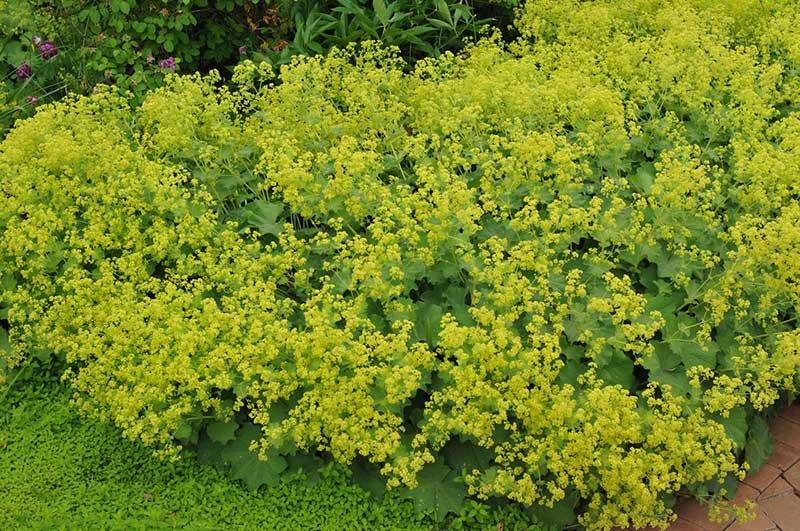
Lady’s Mantle (Alchemilla mollis) is a charming plant that will happily spread in your garden. Its scalloped leaves catch water droplets, creating a magical effect after rain or dew.
You’ll love the frothy lime-green flowers that appear in late spring. They add a delicate touch to borders and rock gardens. Lady’s Mantle is easy to grow and thrives in partial shade to full sun.
To plant Lady’s Mantle, space them 12-18 inches apart in moist, well-draining soil. You can sow seeds directly in the garden or start them indoors. Once established, these hardy perennials will self-seed freely, creating a lush ground cover.
25. Globe Amaranth
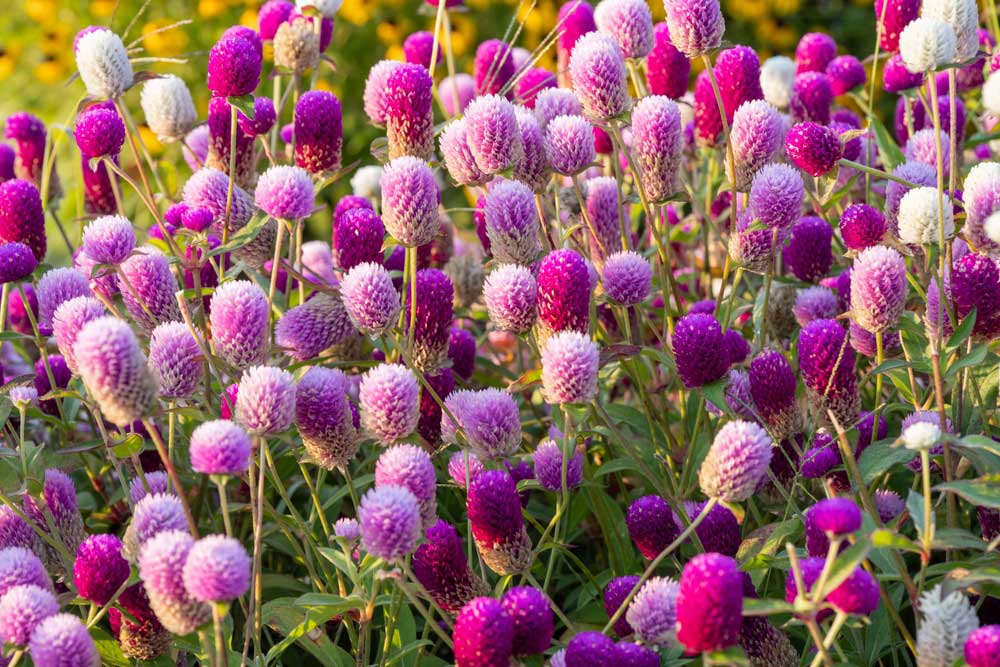
Globe amaranth (Gomphrena globosa) is a fun and easy plant to grow in your garden. It has bright, round flowers that look like colorful pom-poms. These flowers come in shades of pink, purple, white, and red.
You can start globe amaranth seeds indoors or plant them directly in your garden. They like full sun and well-drained soil. Once established, these plants don’t need much water.
Globe amaranth will self-seed in warm climates. This means you might find new plants popping up in your garden next year. The seeds have a low germination rate, so don’t worry about it taking over.
These flowers are great for cutting gardens. You can use them fresh or dried in bouquets. They also attract butterflies to your garden, adding extra beauty and life.
26. Siberian Wallflower
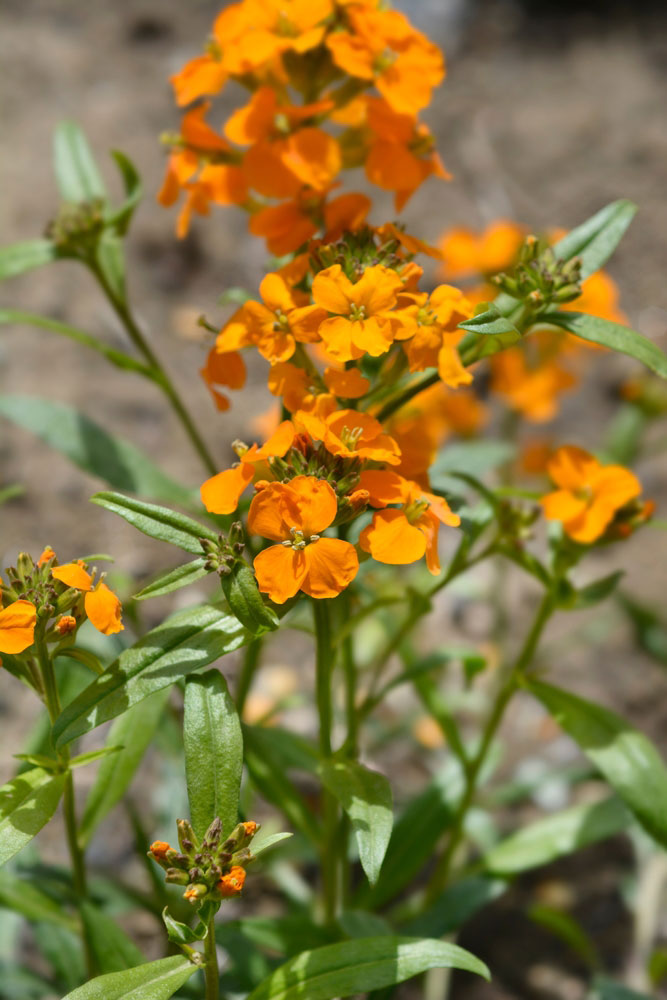
Siberian Wallflower (Erysimum cheiri) is a charming plant that brightens up your garden with its fragrant yellow and orange blooms. You’ll love how easily it self-seeds, creating new plants year after year.
To grow Siberian Wallflower, plant seeds in fall for spring germination. Choose a sunny spot with well-draining soil. These flowers thrive in full sun but can handle some afternoon shade in hot climates.
Once established, Siberian Wallflower is low-maintenance. It attracts pollinators to your garden and makes lovely cut flowers. Let some blossoms develop into seedpods to ensure self-seeding for next season.
27. Celandine Poppy (Stylophorum diphyllum)
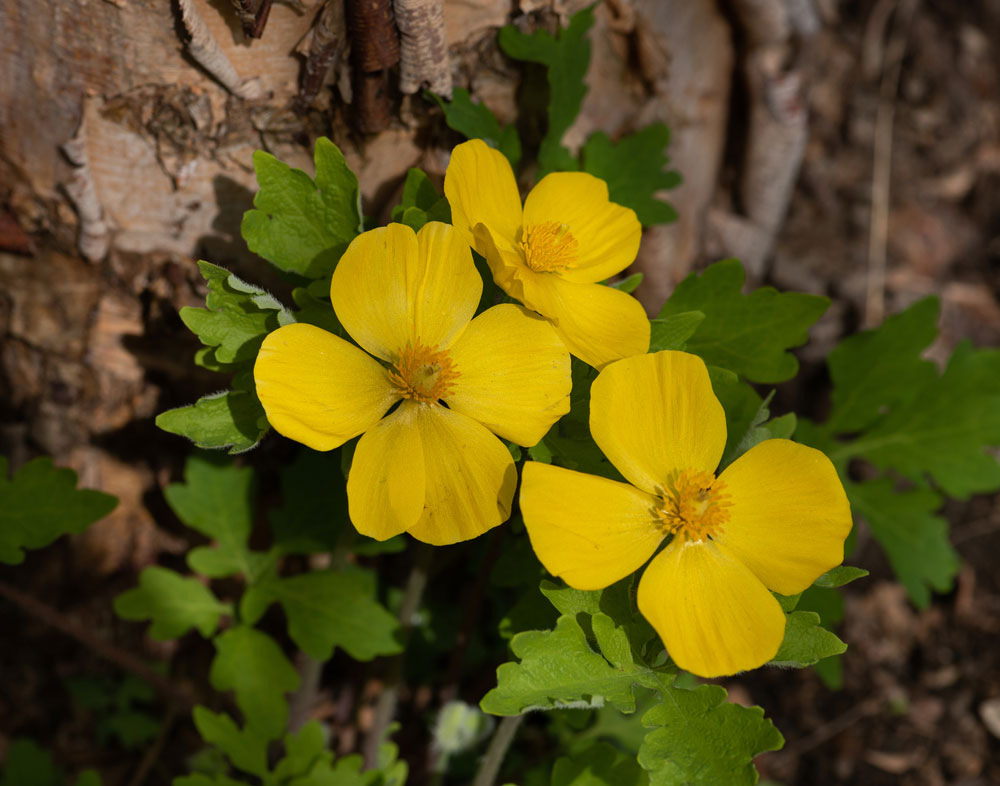
Celandine poppy, or Stylophorum diphyllum, is a charming woodland plant that brings a splash of yellow to shady gardens. You’ll love how it self-seeds, creating natural drifts of color.
To plant celandine poppies, choose a spot with moist, rich soil in partial to full shade. Scatter seeds in fall or early spring, gently pressing them into the soil surface. Water lightly and keep the area moist.
These easy-care plants bloom in spring and may flower again in late summer. You’ll appreciate their low-maintenance nature. They go dormant in hot, dry summers, so plant them behind other perennials for year-round interest.
Benefits of Self-Seeding Plants
Self-seeding plants offer a budget-friendly and low-effort approach to gardening while enhancing the ecosystem by supporting diverse species. We’ll look into cost savings, minimal upkeep, and their positive impact on biodiversity.
Cost-Effective Landscaping
One of the main benefits of self-seeding plants is their cost-effectiveness. Once planted, these plants often come back year after year without the need to buy new seeds. This not only cuts down on costs but also saves trips to the garden center.
In addition, self-seeding plants can fill up garden spaces quickly. This reduces the need for additional plants. For someone on a budget, it’s a great way to achieve a lush garden without breaking the bank.
Some self-seeding plants naturally spread and multiply, providing ground cover and reducing the need for mulch. This further helps in cutting down gardening expenses. Plus, it’s always exciting to see unexpected blooms pop up in different spots!
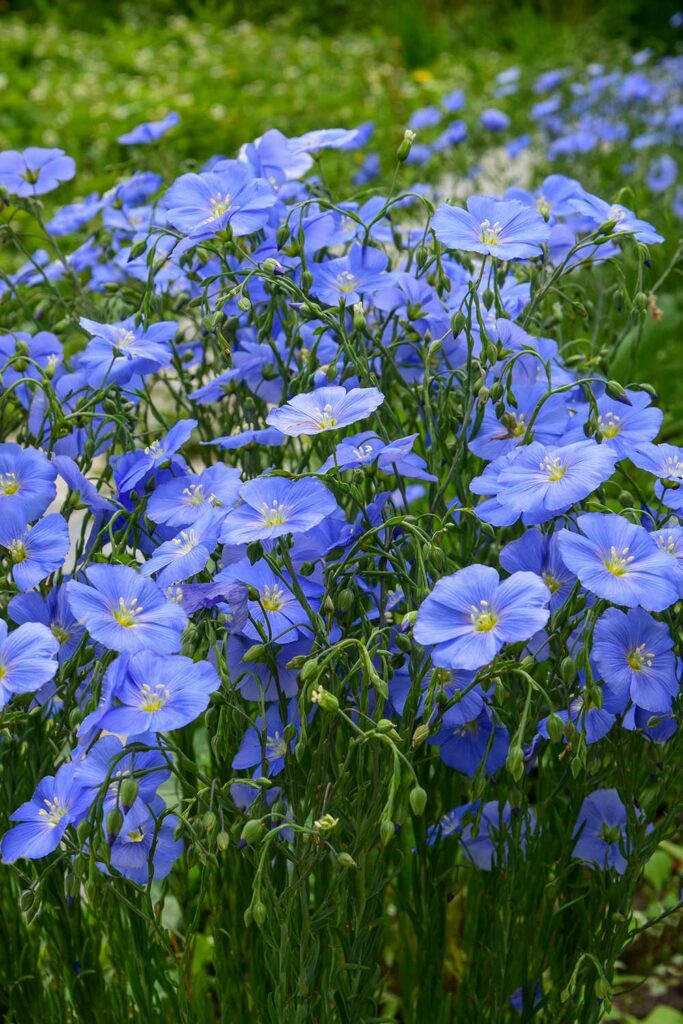
Low Maintenance Gardening
Gardening can be a lot of work, but self-seeding plants make it easier. These plants often require less attention once they’re established. They’ve adapted to reproduce and thrive with minimal help from us.
Because they reseed on their own, there’s less need for repetitive planting. This dramatically reduces the time and effort required compared to buying and planting new seeds every season. It’s a perfect option for someone who loves a beautiful garden but doesn’t have hours to spend maintaining it.
Additionally, self-seeding plants tend to be resilient. They often thrive in various conditions and don’t require constant watering or soil amendments. This makes them an ideal choice for a low-maintenance gardening routine.
Promotes Biodiversity
Self-seeding plants are champions at promoting biodiversity. By growing and spreading naturally, they support various pollinators like bees and butterflies. This, in turn, benefits other plant species and creates a healthier ecosystem.
Many self-seeding plants are native species, tailored to the local environment. They offer food and habitat for local wildlife, helping to sustain the native biodiversity of the area. Including these plants in your garden can create a mini-ecosystem, buzzing with life.
By having a diverse range of plants in your garden, you can attract a variety of birds, insects, and other wildlife. This creates a dynamic and lively garden environment. The more diverse your plant life, the more robust your garden’s ecosystem will be.
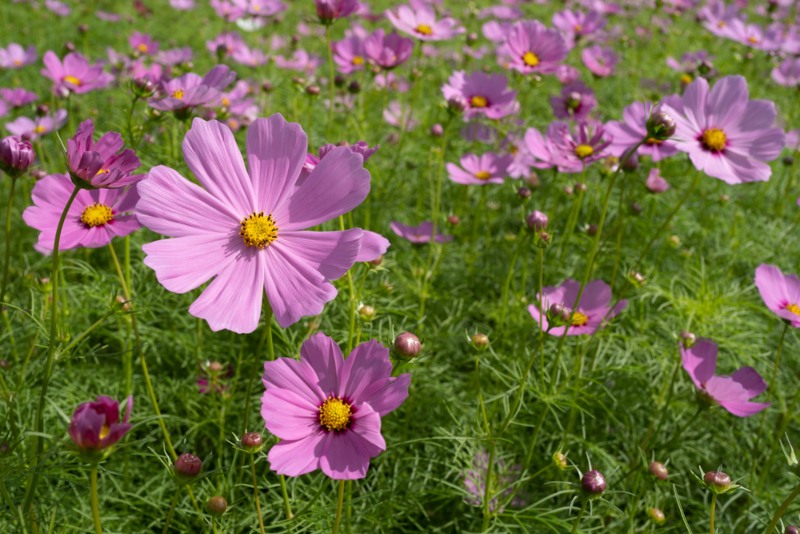
How to Encourage Self-Seeding
Encouraging plants to self-seed involves selecting the right species, ensuring appropriate soil conditions, and applying proper watering techniques.
Choosing the Right Plants
Selecting plants known for their self-seeding capabilities is crucial. Annuals like Cosmos, Nigella, and Rudbeckia are excellent choices. Perennials such as Foxglove and Columbine also work.
I usually opt for native varieties because they adapt better to local conditions. Mixing these plants in flower beds can provide a continuous bloom cycle throughout the seasons.
Optimal Soil Conditions
Soil plays a crucial role in self-seeding. The soil should be well-draining yet capable of retaining enough moisture. I often add compost to enrich the soil, providing a nutrient-rich environment for seeds to germinate.
Bare patches of soil can help, as mulched or heavily covered soils make it hard for seeds to take root.
Proper Watering Techniques
Watering is essential, especially during the initial growth phase. Once established, most self-seeding plants are relatively drought-tolerant.
I prefer to water early in the morning to minimize evaporation and fungal issues. Overwatering can be detrimental, leading to poor root formation and disease. Consistent, moderate watering gives the best results.
Managing Self-Seeding Plants
Managing self-seeding plants involves ensuring they don’t overcrowd your garden while keeping an eye out for unwanted seedlings.
Avoiding Overcrowding
When self-seeding plants thrive, they can sometimes spread too much. To avoid overcrowding, I thin the seedlings regularly. This ensures that each plant has enough space to grow strong and healthy, without competing for resources.
I also practice strategic planting by spacing the plants appropriately from the beginning. Additionally, I use mulch around the base to prevent seeds from settling and spreading uncontrollably.
Recognizing Unwanted Seedlings
It’s essential to distinguish between desired plants and unwanted seedlings. I make a habit of familiarizing myself with the seedlings of preferred plants, so I can quickly identify and remove any that don’t belong.
Weeding is a routine task. I find it helpful to inspect the garden frequently, especially after rainfall, as this is when new seedlings are likely to appear.

